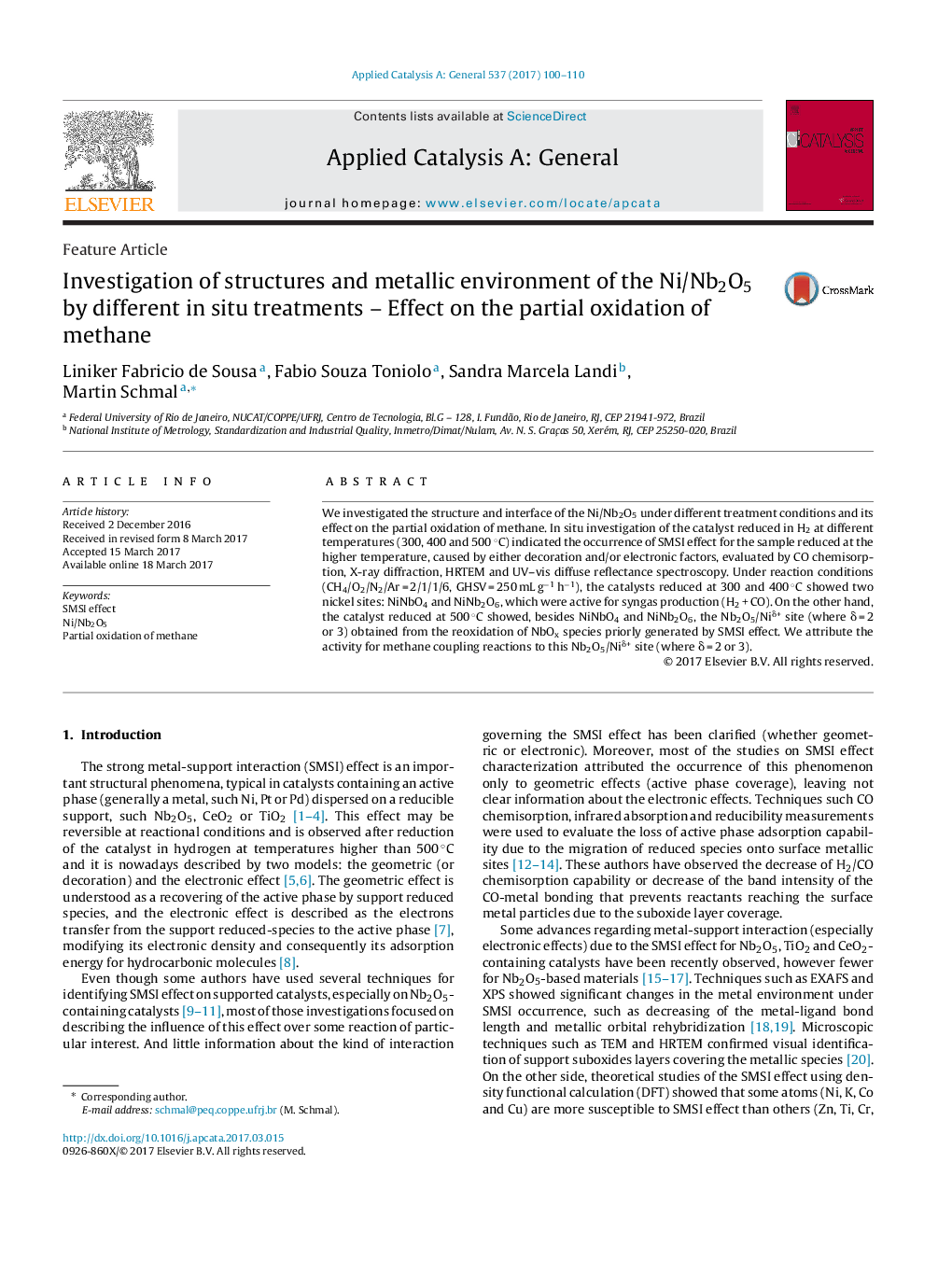| Article ID | Journal | Published Year | Pages | File Type |
|---|---|---|---|---|
| 6453304 | Applied Catalysis A: General | 2017 | 11 Pages |
â¢We studied the structure and the metallic environment of 2% Ni/Nb2O5 under different in situ treatment.â¢Model catalyst with higher Ni loading presented different structures under reaction conditions compared to those observed in reduction environment.â¢XRD, CO-chemisorption, HRTEM and UV-vis DRS evidenced the SMSI effect.â¢Under POM reaction we identified NiNbO4 (Ni3+) and NiNb2O6 (Ni2+) phases.â¢The surface Nb2O5/Niδ+ interface site appears to be selective to C2 compounds.
We investigated the structure and interface of the Ni/Nb2O5 under different treatment conditions and its effect on the partial oxidation of methane. In situ investigation of the catalyst reduced in H2 at different temperatures (300, 400 and 500 °C) indicated the occurrence of SMSI effect for the sample reduced at the higher temperature, caused by either decoration and/or electronic factors, evaluated by CO chemisorption, X-ray diffraction, HRTEM and UV-vis diffuse reflectance spectroscopy. Under reaction conditions (CH4/O2/N2/Ar = 2/1/1/6, GHSV = 250 mL gâ1 hâ1), the catalysts reduced at 300 and 400 °C showed two nickel sites: NiNbO4 and NiNb2O6, which were active for syngas production (H2 + CO). On the other hand, the catalyst reduced at 500 °C showed, besides NiNbO4 and NiNb2O6, the Nb2O5/Niδ+ site (where δ = 2 or 3) obtained from the reoxidation of NbOx species priorly generated by SMSI effect. We attribute the activity for methane coupling reactions to this Nb2O5/Niδ+ site (where δ = 2 or 3).
Graphical abstractDownload high-res image (149KB)Download full-size image
